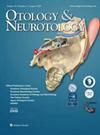Sound Measurements in Pulsatile Tinnitus: A Review in 171 Patients.
IF 1.9
3区 医学
Q3 CLINICAL NEUROLOGY
引用次数: 0
Abstract
OBJECTIVE To evaluate the diagnostic application of external ear canal sound measurements in pulsatile tinnitus (PT). STUDY DESIGN Retrospective chart review on a prospective series of sound measurements. SETTING Tertiary referral center. PATIENTS A cohort of 171 PT patients with sound measurements during diagnostic workup for PT (2016-2023). MAIN OUTCOME MEASURE The percentages of PT patients per pathology and diagnosis, with PT objectified by sound measurements. RESULTS In 57% of the patients, an identifiable etiology that could explain the PT was identified using various imaging modalities. The PT could be detected with a sound measurement in the ear canal in 48% of these patients. In absence of an identifiable etiology, an objective PT was found in only 15% of the cases. PT was more often detected for patients with arterial pathologies than venous or nonvascular pathologies (73% vs 50% and 22%, respectively). Particularly, in PT patients with a DAVF, an objective PT was found for all patients (100%). The sound measurements were found to be more sensitive than auscultation in detecting bruits in PT patients. CONCLUSION A sound recording can objectify PT in almost half of the cases with a diagnosis as determined by imaging. In patients where the PT cannot be detected, arterial pathologies (particularly DAVFs) are less likely. Combined with a thorough clinical evaluation and proper imaging studies, sound measurements can be of added value in the clinical pathway of PT patients.搏动性耳鸣的声音测量:对 171 名患者的回顾
目的评估外耳道声音测量在搏动性耳鸣(PT)中的诊断应用.研究设计对一系列前瞻性声音测量的病历进行回顾性分析.设置三级转诊中心.患者171例PT患者的队列在PT诊断过程中进行了声音测量(2016-2023年).结果57%的患者通过各种影像学模式确定了可解释 PT 的病因。其中 48% 的患者可以通过耳道声音测量检测到 PT。在无法确定病因的情况下,只有 15%的病例发现了客观的 PT。动脉病变患者比静脉或非血管病变患者更容易检测到 PT(分别为 73% 对 50% 和 22%)。特别是在患有 DAVF 的 PT 患者中,所有患者(100%)都能发现客观 PT。在检测 PT 患者的淤血方面,声音测量比听诊更灵敏。在无法检测到 PT 的患者中,动脉病变(尤其是 DAVF)的可能性较小。结合全面的临床评估和适当的影像学检查,声音测量在 PT 患者的临床路径中具有附加价值。
本文章由计算机程序翻译,如有差异,请以英文原文为准。
求助全文
约1分钟内获得全文
求助全文
来源期刊

Otology & Neurotology
医学-耳鼻喉科学
CiteScore
3.80
自引率
14.30%
发文量
509
审稿时长
3-6 weeks
期刊介绍:
Otology & Neurotology publishes original articles relating to both clinical and basic science aspects of otology, neurotology, and cranial base surgery. As the foremost journal in its field, it has become the favored place for publishing the best of new science relating to the human ear and its diseases. The broadly international character of its contributing authors, editorial board, and readership provides the Journal its decidedly global perspective.
 求助内容:
求助内容: 应助结果提醒方式:
应助结果提醒方式:


